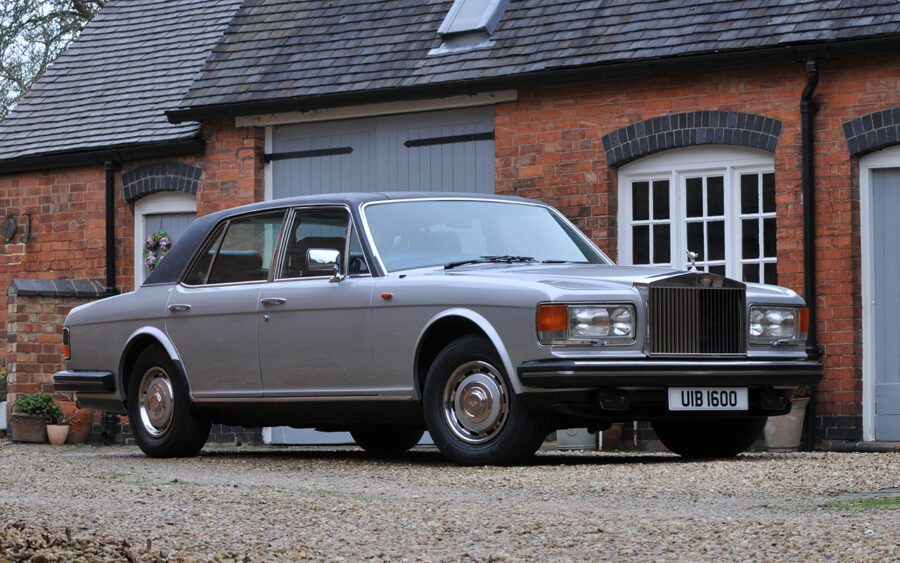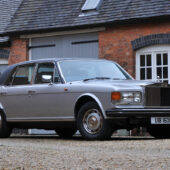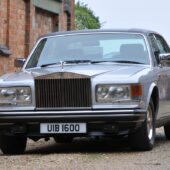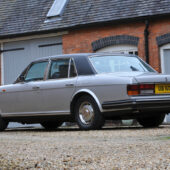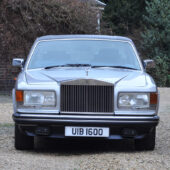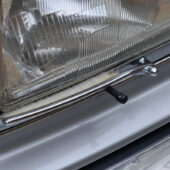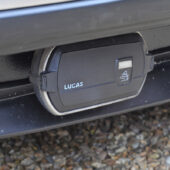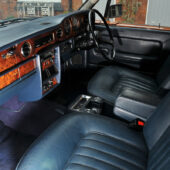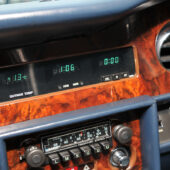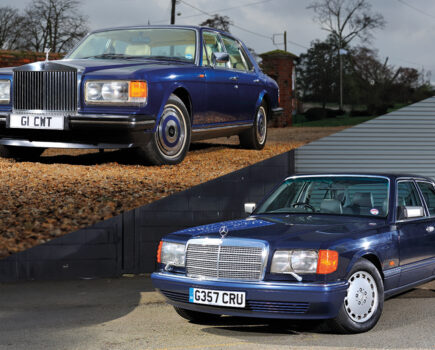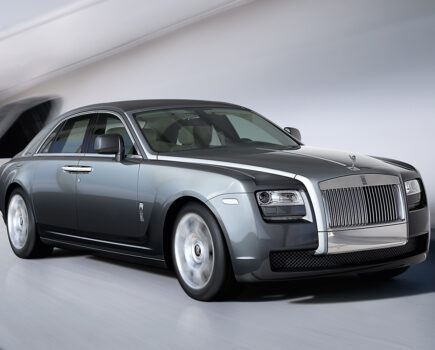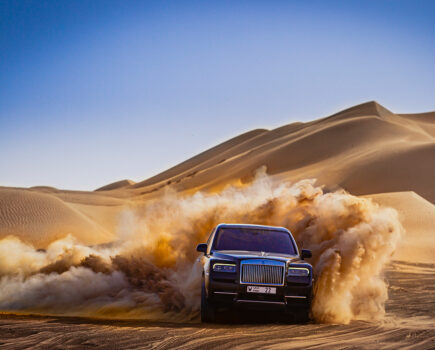Even decades after its introduction, the Rolls-Royce Silver Spirit still has plenty to offer – as we discovered from behind the wheel of a particularly early survivor
Words and images: Paul Wager
When Rolls-Royce Motors’ managing director, David Plastow, encouraged his engineering department to send a timeworn Silver Shadow prototype off to Broadspeed for a turbo installation with the words “Let’s have a bit of fun,” he kick-started a process that would ultimately see the Rolls-Royce brand overtaken by Bentley’s rediscovered performance ambitions.
That boosted Silver Shadow hack would ultimately spawn the Mulsanne Turbo and in turn the Turbo R, which captured the imagination of a whole new class of buyer for the Crewe firm’s cars. Today, with the Silver Spirit-based models now very much accepted as modern classics, it’s still the Turbo R that gets much of the attention, leaving the regular Rolls-Royce derivative as arguably the overlooked member of the SZ-generation family. This presents something of an opportunity for the thinking classic buyer, however, since the Silver Spirit has a lot to offer even in regular non-turbo form – and represents a great alternative to the ever-appreciating Silver Shadow, with the bonus of a more accessible entry price.
In practice, the Silver Spirit and Silver Shadow are more closely related than their appearances might suggest, with development of the newer car beginning as early as 1972. Unfortunately for Rolls-Royce the car maker though, parent company Rolls-Royce the aero engine maker had suffered financial collapse the previous year, the fallout from which saw the car maker being spun off as an independent business. This at least freed it from being dragged down by the problems of its parent; but the downside was that it no longer had access to the financial and engineering resources of a larger group.
It meant that any successor to the Silver Shadow couldn’t be a clean-sheet design, and so would need to use an adapted version of the SY-generation’s platform, as well as the long-serving ‘six and three-quarters’ V8 engine. This could have proved rather restrictive, since by the standards of luxury saloons from Cadillac and Mercedes-Benz, the Silver Shadow looked narrow and upright, as well as being physically smaller than any ‘full-size’ American models. Fortunately, however, clever styling tricks enabled Rolls-Royce to produce a car that appeared much larger than its predecessor, even if it was only marginally longer and wider.
As Rolls-Royce & Bentley Driver readers will already be aware, late-model Turbo Rs command strong values, while the Silver Shadow is increasingly sought-after, with prices rising accordingly. Meanwhile, the Silver Spirit has languished in a kind of no-man’s-land, with values reflecting the many tatty, unloved examples that have been a familiar sight for a number of years. The tide is turning though, particularly as the Silver Spirit is about to celebrate its 40th birthday – finally attracting the kind of respect it deserves as a desirable classic in its own right.
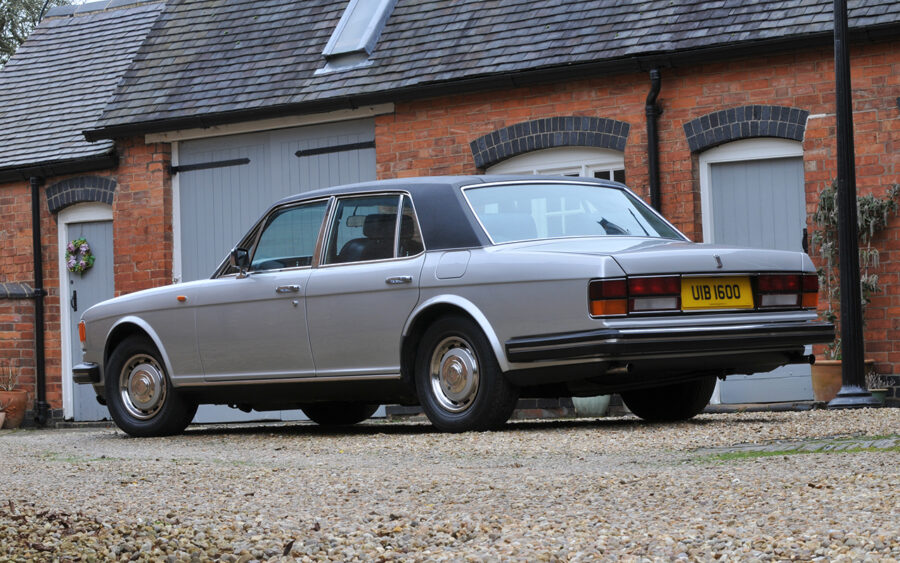
With the really shabby examples being broken up, this means the standard of surviving cars is gradually rising, although there remains a big gulf between the bottom of the market and really nicely preserved examples like you see here. The expense of sorting out tired hydraulics, frilly bodywork and dog-eared wood and leather means that it can often make sense to buy a better example in the first place. And so in our quest to revisit the Silver Spirit in its original form, we went straight to the top of the market with the car you see here. Currently in stock at Warwickshire-based Manor House Automobiles, it’s an impressively original example that, having lived under cover for most of its life, is also unusually solid.
My recent experience of the Silver Spirit generation has centred around the later turbo cars, which on their fat low-profile tyres and with colour-coded bodywork and aluminium mesh trim, tend to look more aggressive. But as this early Silver Spirit emerged from the barn on the day of our road test, I was struck by its presence.
Considering the restrictions of the Silver Shadow platform, this was a clever trick for Rolls-Royce’s in-house designer, Fritz Feller, to pull off. Lowering the roofline by half an inch, dropping the waistline and enlarging the glass area by 30% made the car seem physically larger, while tricks like a flatter bonnet pressing and horizontal design elements to the lights made it appear substantially wider.
The impression of imposing bulk continues as you climb aboard the Silver Spirit – or rather slide into the seat, which is higher than a lesser passenger car. The chunky chromed door handle looks as if it will need a hefty yank but in fact clicks with an easy precision, allowing the heavy door to swing gently open and, of course, to latch closed again with little more than a gentle push.
Firing up the Silver Spirit seems more 1950s than 80s though, with Rolls-Royce perhaps deliberately adding a sense of occasion. Your first task is to identify which one of the several keys is used for the ignition, with the key switch located not on a steering column in the modern way but directly ahead in the dashboard – a layout familiar to anyone who has experienced the Silver Spirit’s predecessor.
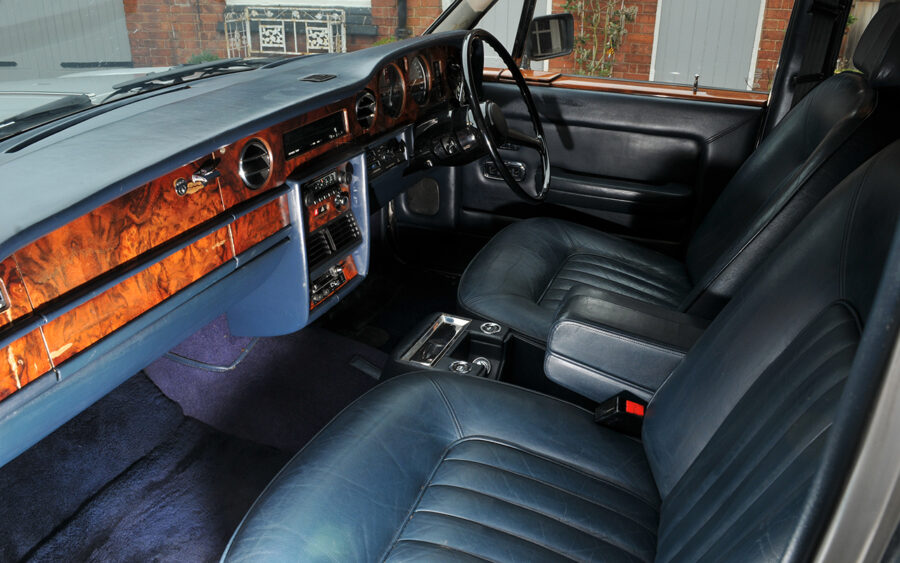
Early Spirits like this one ran twin SU carburettors, fuel-injection not arriving on UK-spec models until well into the ’80s, but the V8 catches immediately and idles with just enough presence to let you know it’s there; not entirely silent, but as muted as a current petrol engine a sixth of the size. The running gear was essentially carried over unchanged from the late-model Shadow, retaining the three-speed GM Hydramatic transmission controlled via a slender column shift. Fingertip effort is needed to slip the Silver Spirit into Drive, while the long throttle travel makes it ease away smoothly from a standstill.
More vigorous acceleration shows one of the more significant technical differences between the Silver Shadow and the Silver Spirit, with the latter receiving the redesigned rear suspension that originally debuted on the Corniche and Camargue. Known internally as a ‘refinement package’, it answered criticisms of the Silver Shadow’s handling by redesigning the angle of the rear trailing arm pivots, reducing body roll and providing a flatter ride. The rear track was also widened by three inches over the Silver Shadow, and a reinforced subframe carried the rear axle and suspension via rubber body mounts.
The end result is that the Spirit retains the same ride comfort as the Shadow, but is a much more capable handler than many owners would have ever known, with noticeably less lean under brisk cornering. It all adds up to a car with a pace which belies its bulk in the way it fits into everyday traffic. A neat pedestrian protection system that dropped the Spirit of Ecstasy into the radiator shell on impact allowed the mascot to remain on the Silver Spirit’s prow, and it makes a great marker for placing the car on the road. Despite its apparent girth, the Rolls-Royce is easy to thread through busy town centres and narrow lanes, with its relatively high driving position adding to the driver’s feeling of confidence.
On faster open roads, the car can make brisk yet unruffled progress, seldom needing more than a light touch on that slender-rimmed wheel and the self-levelling generally keeping things on an even keel. Well into the 1980s, Rolls-Royce was still insisting on opaquely describing the V8’s power output as “adequate”, although that was generally thought to be some 200bhp. Yes, that’s significantly bettered by the later turbocharged cars; but with its torque reckoned to be around the 300lb ft mark, the Spirit feels far from breathless, and generally has power on tap to maintain high speeds. This is a classic that’s all about effortlessly covering distance in comfort, and in that respect it’s as good as it gets.
The interior of the Silver Spirit in 1980 introduced such new-fangled features as digital LED displays for temperature and time, which back in the day were a daring modernity for Rolls-Royce customers but today seem delightfully old-fashioned. Apart from that though, the cabin shares much with the later Silver Shadows, with its glossy veneer on doors and dashboard, chunky chromed control knobs and rich leather. It is, of course, an immensely comfortable place to be, aided by those heavily-bolstered seats and impressive refinement at all speeds.
In short, a well-preserved early survivor such as this represents a classy way to travel, as well as offering the ideal compromise between the genteel appeal of the Silver Shadow and the more modern driving manners of a later SZ. There is an acceptance among marque aficionados that the Silver Spirit was substantially improved throughout its lengthy career, which it undoubtedly was. But there’s something about an early example that still delights, offering today’s buyers the Silver Spirit experience in its original, purest form.

